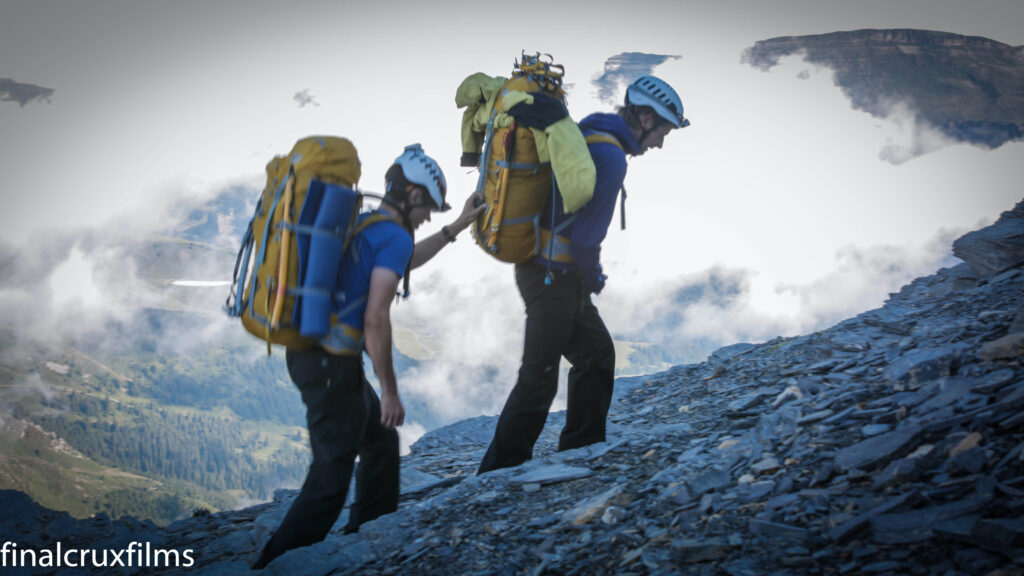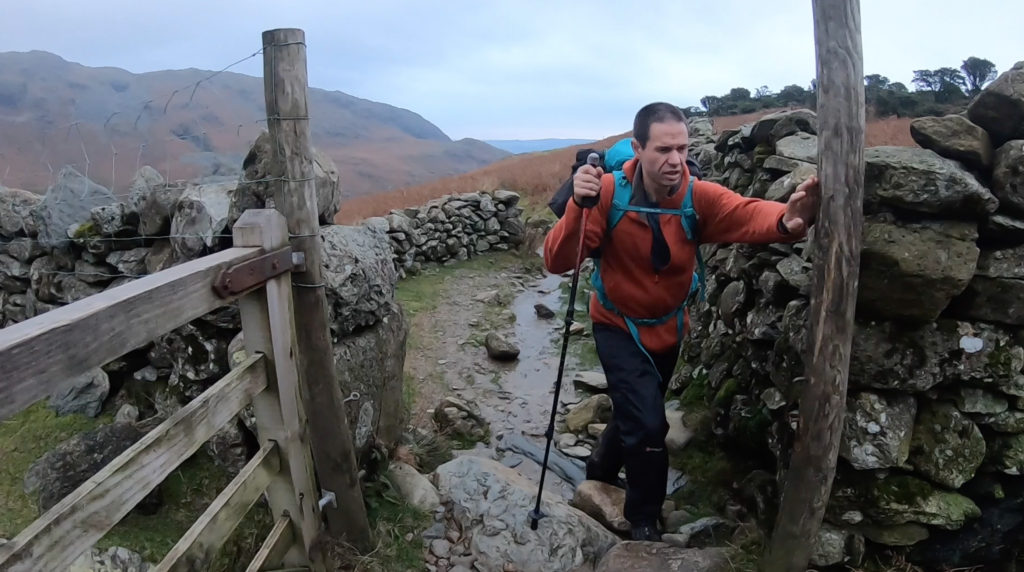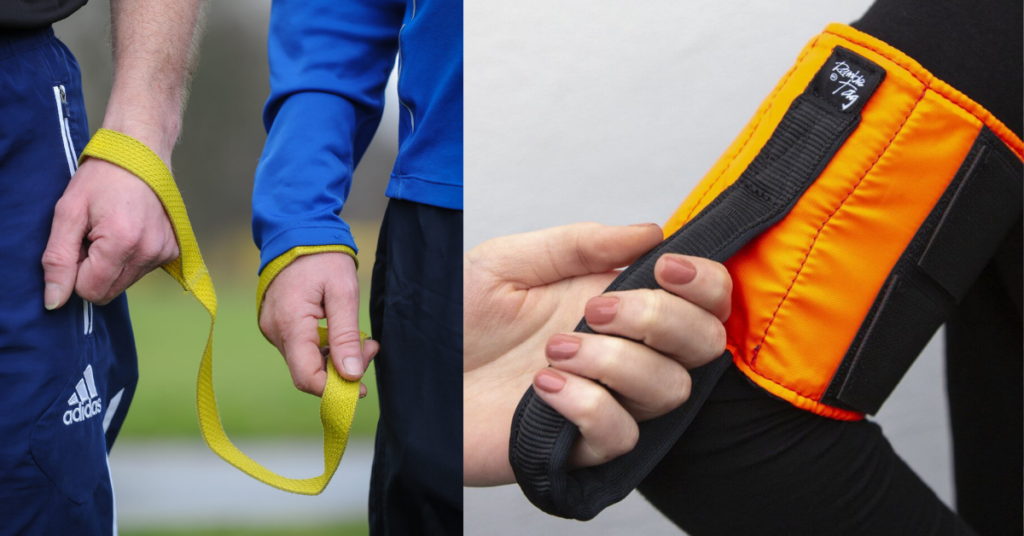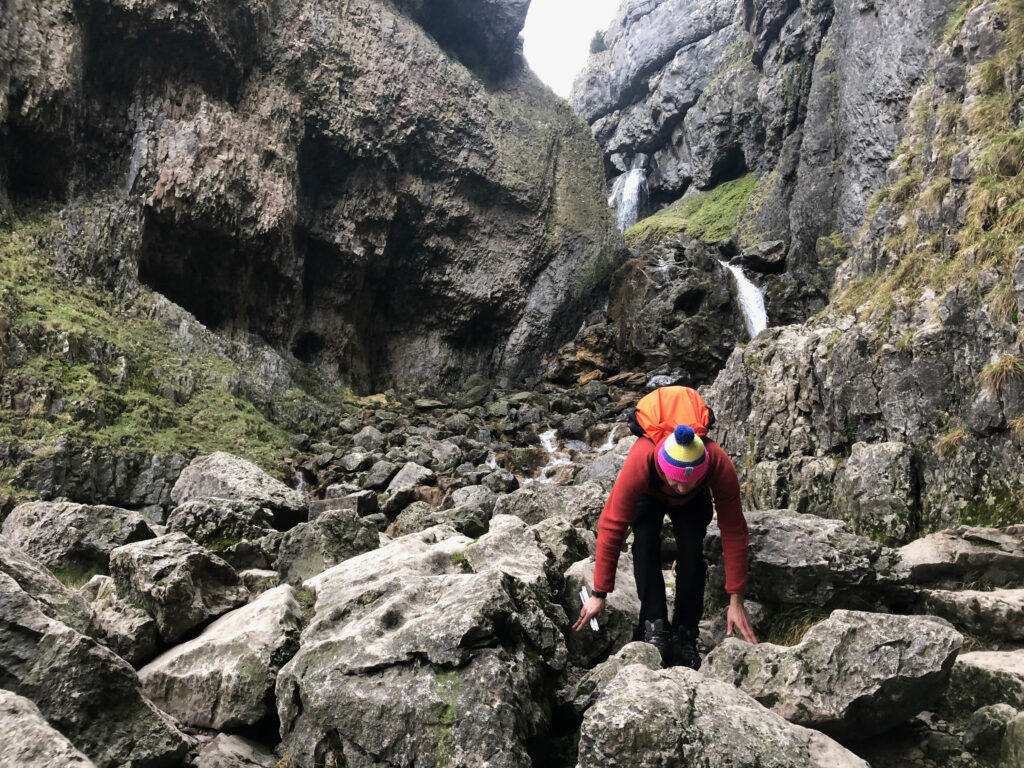Contents
Guiding outdoors at crags and on footpaths can sometimes need a different approach. Difficult terrain can be mentally challenging for both parties to negotiate. For this reason, it’s a good idea to allow extra time to get to a venue. You should also choose decent routes off the crag carefully. We often walk a little further to head down a more straightforward path.
Backpacks
A backpack is a really useful tool when guiding outside on narrow paths (where the typical side by side approach cannot be taken). Wearing a backpack gives the VIP (visually impaired person) something to hold on to and it puts some distance between the climber and guides feet. John climbed the Eiger using this technique.

Walking poles
Walking poles are a great tool for people with a visual impairment outside. They can often do the same job as a cane but with the added benefit of being strong enough to put some weight on. Some blind people can follow behind independently using walking poles to assist them. For others, they can be used much like a cane to gauge the distance of any gaps or the height of steps. Guides and visually impaired people can also take one end of a walking pole each an walk side by side or one behind the other.

Other options
There are a few other options when guiding a blind person outside. A running tether is a short loop of webbing used to by blind runners and guides. For long walks where the path is quite wide using a running tether gives a little more freedom to the person with a visual impairment and guide.
Ramble tags are a collar with webbing loop worn on the guides bicep. It’s a different option that will be right for some people but we have no personal experience of them. The idea is to provide a more natural and independent way for a visually impaired person to be guided without the need for physical contact.

Extra considerations
It’s especially important to keep a lookout for obstacles like rocks, gullies, low branches and uneven surfaces when guiding in the outdoors. You don’t need to totally avoid them, you just need to explain where they are and slow down to help the person to get around them safely. With large overhead obstacles it might be helpful to guide their hand to the branch or outcrop and allow them to duck under it independently.

